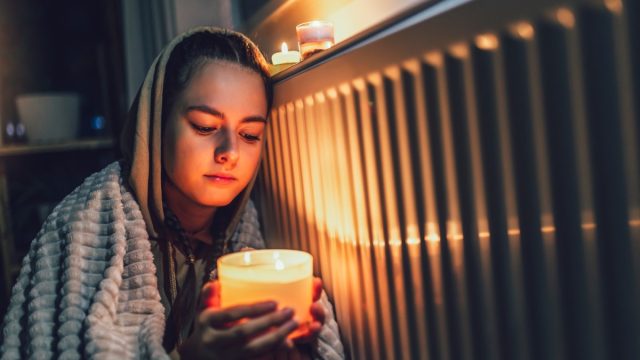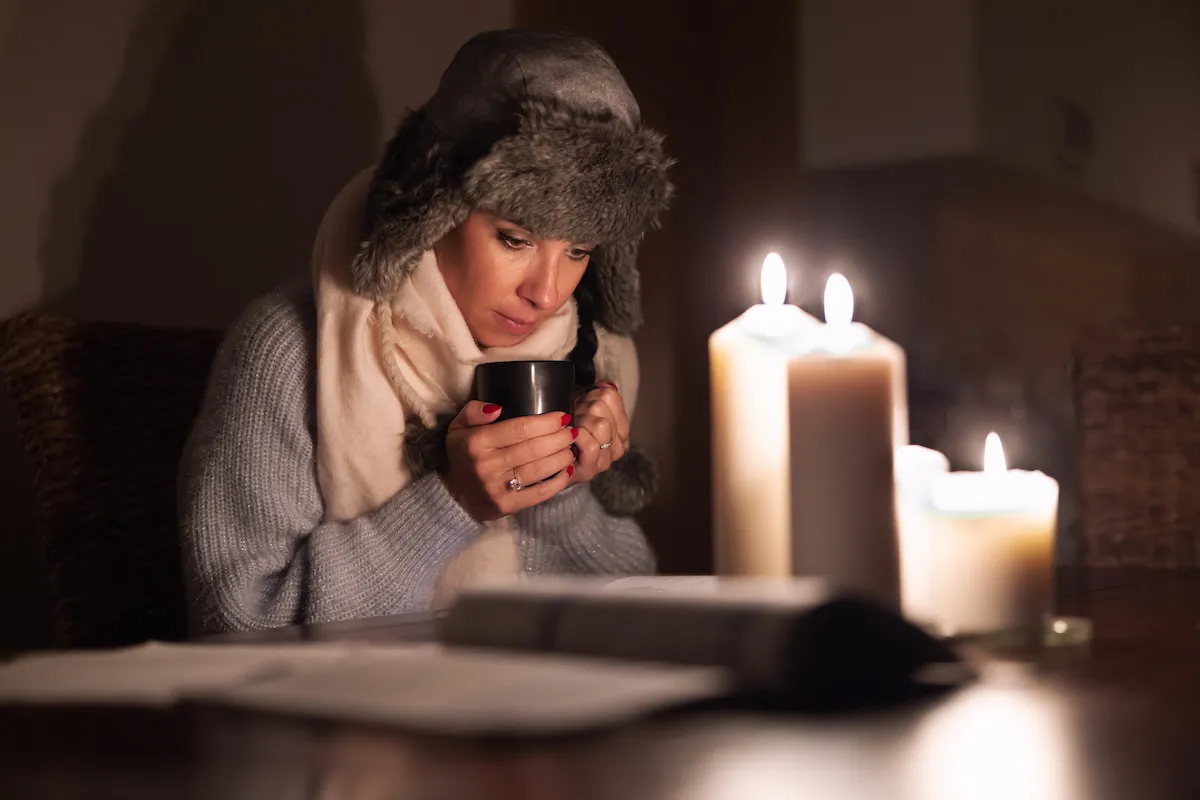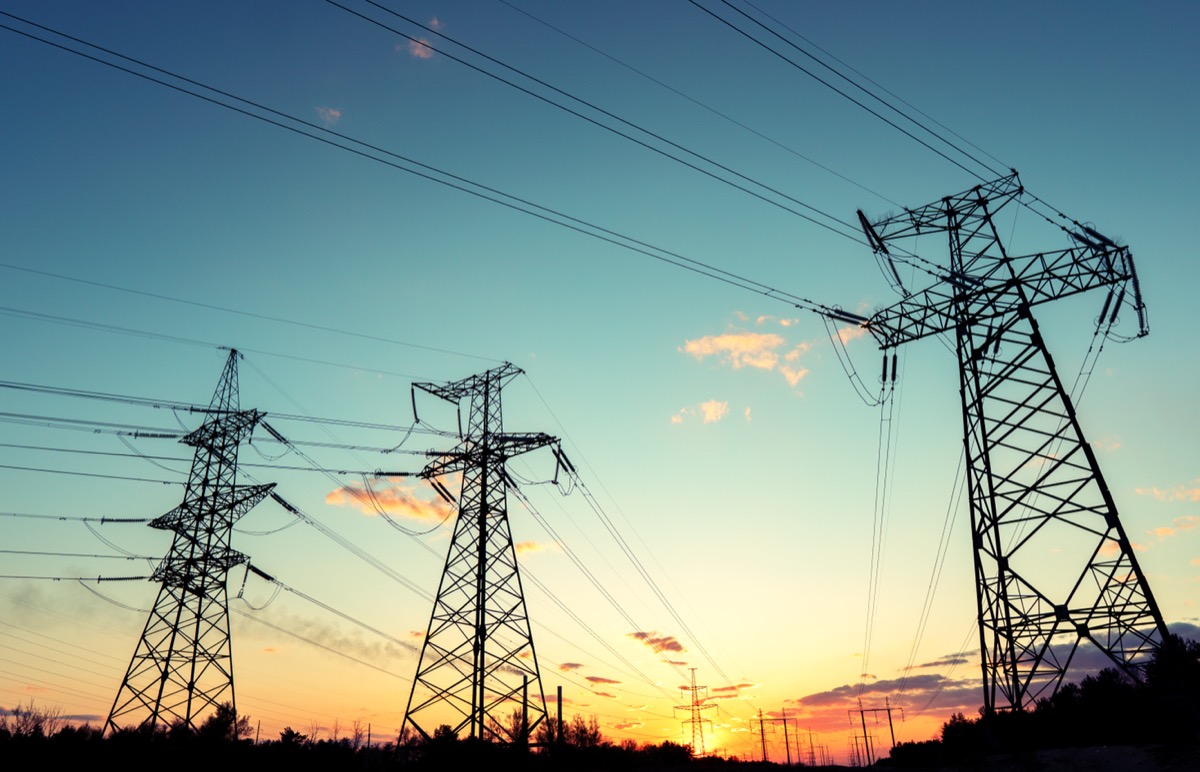Widespread Blackouts Predicted for 2024—Will They Hit Your Region?

It’s easy to take for granted the infrastructures that keep our lives humming along: For example, things would quickly collapse if we suddenly had no running water, plumbing, or electricity. There’s good reason to believe that these systems will continue to function as usual, but experts say that as we place an increasing strain on our natural resources, many of us can expect to see increased disruptions to the power grid beginning this year. Widespread blackouts may affect two-thirds of people living in North America in 2024, a new report warns.
RELATED: 9 Essential Tips to Winter-Proof Your Home.
More blackouts are expected in 2024 and beyond.

The report, produced by the North American Electric Reliability Corporation (NERC), says that as we head into 2024, North Americans can expect more frequent and prolonged power outages. In fact, their projections suggest that the problem will persist over the coming decade. “This assessment provides clear evidence of growing resource adequacy concerns over the next 10 years,” the report states.
Many regions are considered at heightened risk only under extreme weather conditions. That’s because generators can go offline during prolonged cold snaps, threatening the reliability of the natural gas supply and infrastructure. However, some areas could see increased blackouts even under more moderate weather conditions, the NERC report says.
Here’s why it’s happening.

Jim Matheson, CEO of the National Rural Electric Cooperative Association, recently spoke with CBS News to explain the root of the problem.
“The biggest factor is we’re using more and more electricity as a country. Think of all the devices we all use every day now. Cloud computing, AI—that’s all using more and more electricity,” Matheson said. “At the same time, we haven’t been replacing it by building more capacity to generate electricity. In fact, we’ve been closing down power plants that had useful life left in them, both gas plants and coal plants, and that means we’re digging a deeper hole.”
Matheson added that while renewable energy sources will need to be part of the solution, they aren’t currently able to meet the energy demand.
“Wind doesn’t blow 24 hours a day. The sun doesn’t shine 24 hours a day. You need to make sure you have that always-available generating capacity during these peak moments. That’s really the danger we see coming into this winter—demand is growing, supply hasn’t kept up,” he told the outlet.
RELATED: How New “Extreme” Thunderstorms and Wind Are Increasing—And Affecting Where You Live.
These areas are at increased risk.

North America’s power grid is divided into regional electric transmission systems, each of which serves several states. According to the NERC report, some of these regions are at an especially heightened risk of increased blackouts.
The system at highest risk is The Midcontinent Independent System Operator (MISO), located in the Midwest and the South. This grid serves all or part of Montana, North Dakota, South Dakota, Minnesota, Iowa, Wisconsin, Michigan, Indiana, Illinois, Missouri, Kentucky, Arkansas, Mississippi, Louisiana, and Texas, according to the Federal Energy Regulatory Commission (FERC).
PJM Interconnection, a grid operator serving much of the Mid-Atlantic region, and SERC Reliability Corp, serving the Southern region, are both at moderate risk, the report further suggests. New York and New England are also areas of concern, John Moura, NERC’s director for reliability assessment and performance analysis, said during a media briefing, via Reuters.
RELATED: Major Hurricanes Intensifying, New Data Shows—Is Your Region in Harm’s Way?
Here’s how to stay safe during blackouts in the meantime.

According to National Grid, there are several ways to prepare for a blackout now, while energy is flowing freely. First, collect all of the supplies you’ll need and keep them in a safe place. This might include flashlights, batteries, solar chargers for your devices, warm blankets, extra clothing layers, and a first aid kit. They also suggest keeping a supply of packaged food items and drinks that you won’t need to refrigerate or cook.
Once a blackout has struck, they recommend switching off any electrical appliances that are not designed to run unattended “so that they don’t come on without you realizing once the power is back. It’s also a good idea to unplug your TV and PC, to avoid damage to them in case of a surge when power returns,” they note.
For more up-to-date weather news sent directly to your inbox, sign up for our daily newsletter.